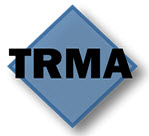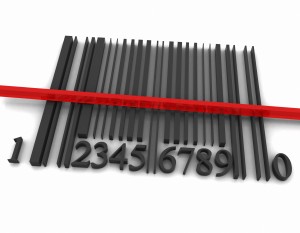Guest Post: Our long time friend and industry expert, Linda Carter, with The Retail Management Advisors recently published this wonderful article on the importance of Physical Inventories. She was gracious enough to allow us to re-post her article.
As every retailer knows, an annual physical inventory of all merchandise is required by the Federal Income Tax law. However, this should not be your only reason for taking inventory. The physical inventory serves several purposes which are as important as satisfying the legal requirement. But unless it is meticulously taken to insure its accuracy, you will find that the information obtained is worthless and misleading.
By comparing the actual physical inventory with the book inventory the retailer is able to check the accuracy of the record keeping that is being done, not only in the office but in the receiving and marking department and on the sales floor. Many things will affect the accuracy of the book inventory, such as unrecorded markdowns, unrecorded markdown cancellations or markups, merchandise sales that are recorded in a wrong class due to a salesperson’s carelessness, merchandise being received and counted in the physical inventory but the invoice not being recorded in the books. The list can go on and on. The important thing to remember is that careless record keeping and the resulting ‘paper shortage’ will hide real shortages caused by shoplifting and theft.
An inaccurate physical inventory has many far-reaching consequences that retailers many times do not consider when actually preparing for and taking the physical inventory. An inaccurate physical inventory which overstates the total amount of merchandise actually in inventory at year-end will result in overstated Gross Profit and Net Profit for the current year which, in turn, can result in the paying of excess income taxes. This mis-statement of Gross Profit and Net Profit will distort the company’s financial statement for two years, the year in which the inaccurate physical inventory took place and the following year when the inaccurate physical inventory is corrected by the taking of a correct physical inventory. Many retailers base their store manager’s and/or buyer’s compensation, in part, on the achievement of certain gross profit, stock turn rate and shrinkage goals. When the physical inventory is incorrect this causes the amount of compensation to be computed incorrectly. While one buyer could be over-compensated, another could be unfairly penalized.
A bad physical inventory can also seriously affect a company’s merchandising decisions by causing erroneous information at the classification level, even though the overall store figures look valid. If the actually inventory counts taken in the store for each class are incorrect the buyers will be basing their purchases on figures that are distorted. For example, if the physical inventory erroneously shows that a particular classification’s inventory level is too low, the buyer will mistakenly buy unneeded merchandise. This can simultaneously work the other way with the inventory showing that a class has too much inventory. In this case the buyer will avoid placing needed orders and sales can be lost.
As shown in the above examples, it is easy to see that a physical inventory carelessly taken is worse than not taking one at all. Instead of bringing the book inventory back in line with what is actually in stock, a bad inventory just causes extra work, confusion, and a wealth of misleading information. Fortunately, there are steps the retailer can take to ensure the accuracy of the physical inventory.
The taking of a good physical inventory involves almost all of the store’s employees whether they work on the sales floor, in the receiving and marking department or in the office. It also requires careful advance preparation. The merchandise on the sales floor must be checked to verify that the information on the garment tag is correct. Personnel must be scheduled for the actual count. If using count sheets, the numbered inventory count sheets must be ordered, written procedures must be established to ensure a clean cut-off of all movement of merchandise and resulting paperwork. A store meeting must be held to review the procedures and emphasize their importance.
No matter how careful you and your employees are, there will be items that may be overlooked which can result in a poor count. Following are some of the things to be aware of and watch out for in preparing for and taking a physical inventory. You can most likely add more based on your own experiences.
- Merchandise out for repair
- Merchandise on display
- Merchandise taken out of the store for use in developing advertising
- Hold merchandise
- Owned merchandise being repaired in the alteration shop
- Merchandise being stored in a seldom used storage area
- Inter-store transfers not being properly counted
- Merchandise in the receiving area that is not counted, even though the paperwork was processed or vice versa
- Merchandise taken off the sales floor by a buyer and left in the buyer’s office
- Damaged merchandise which was taken off the sales floor for which the RTV has not been processed
- Merchandise returned by customers but not put into stock
- Processing the paperwork to return Layaways to stock, but leaving the merchandise in the Layaway room
- Merchandise stored in what inventory counters assume is an “empty” box
- An inaccurate cut-off of paperwork: receipts, inter-store transfers, price changes and return-to-vendors
There are two ways to take a physical count. The first, and oldest method is to use count sheets that are manually completed. The other is by using an electronic device to record the count. Both have their advantages. Both must be carefully used.
If count sheets are used, on the day the inventory is taken, inventory teams must be carefully instructed concerning the appropriate manner for counting and filling out the inventory count sheet. If outside help and non-sales employees are used it is important that the person doing the actual counting is familiar with the merchandise and can therefore spot any mismarked merchandise which otherwise might go unnoticed. All teams should be checked during the first half hour to verify that the forms are being filled out correctly as this will prevent a large number of re-counts. Finally, it is of utmost importance that all count sheets be left on the fixtures until unit counts are verified and the store manager is ready to begin picking them up. This helps to ensure that everything is counted.
The taking of an accurate physical inventory,because of the many details that must be attended to, can be an awesome task.
Remember, it takes no longer to take a good, accurate physical inventory than it does to take a sloppy, inaccurate physical inventory. And, the benefits are many.
 The Retail Management Advisors provide an affordable Open-To-Buy service to independent retailers as well as general management consulting to retail store management. Other areas of focus include: budgeting, cash flow projections, incentive compensation plans, store policy manuals, procedure manuals, shrinkage control, merchandise performance review, as well as many other issues that occur in a retail environment.
The Retail Management Advisors provide an affordable Open-To-Buy service to independent retailers as well as general management consulting to retail store management. Other areas of focus include: budgeting, cash flow projections, incentive compensation plans, store policy manuals, procedure manuals, shrinkage control, merchandise performance review, as well as many other issues that occur in a retail environment.


[…] If you are running SQL 2000, you are not PCI Compliant. […]